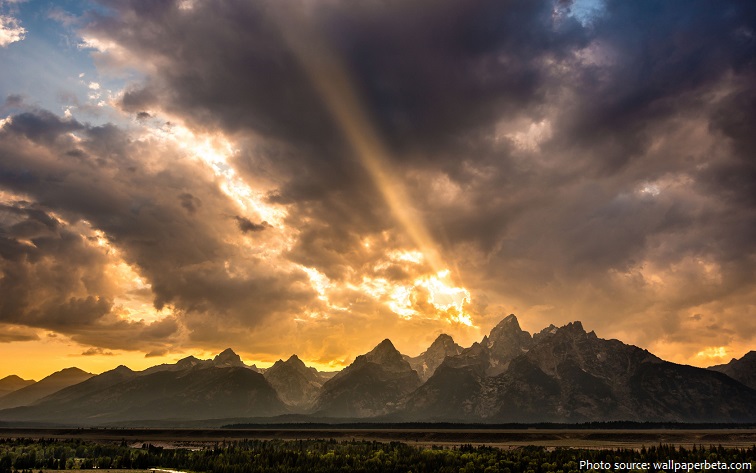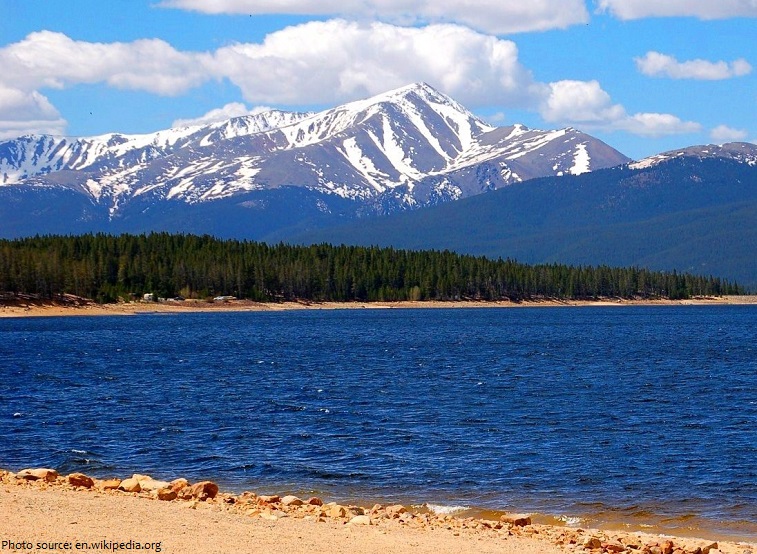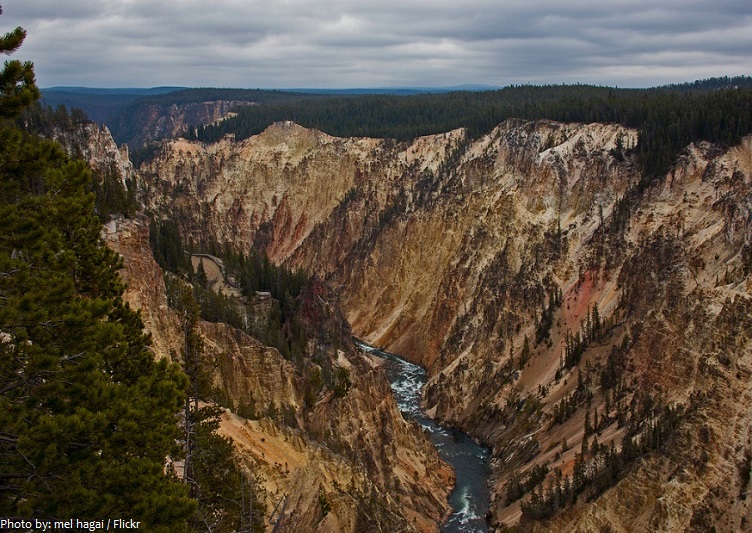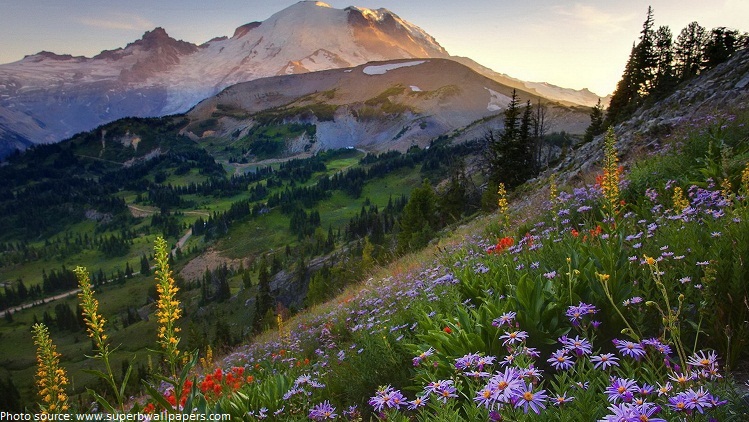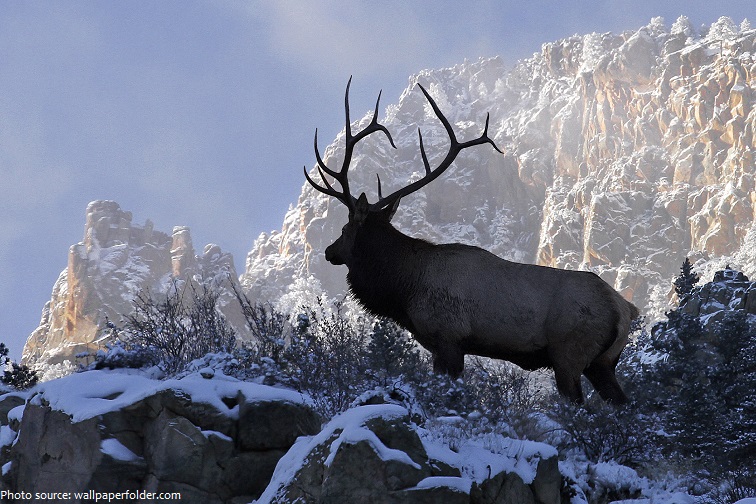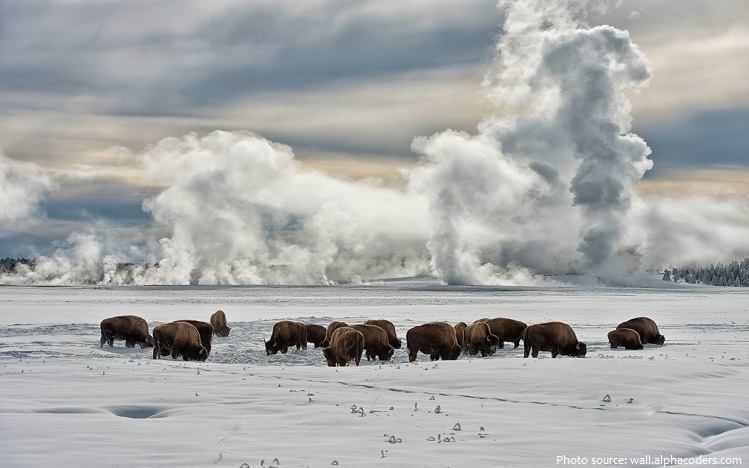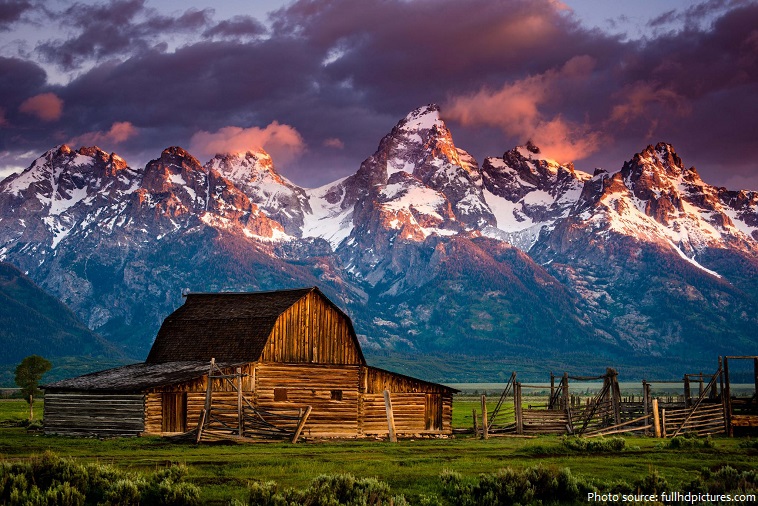The Rocky Mountains, commonly known as the Rockies, are a major mountain range in western North America.
The Rocky Mountain Range actually represents a series of more than 100 separate mountain ranges, rather than one uninterrupted mountain chain.
The Rocky Mountains stretch some 4,800 kilometers (3,000 miles) from British Columbia and Alberta in Canada through Idaho, Montana, Wyoming, Colorado, and down to New Mexico in the U.S.
The Rockies vary in width from 110 to 480 kilometers (70 to 300 miles).
The Rockies are located between the Great Plains on the east (from which they rise abruptly for most of their length) and a series of broad basins and plateaus on the west.
The Rocky Mountains were initially formed from 80 million to 55 million years ago during the Laramide orogeny, in which a number of plates began to slide underneath the North American plate. Although some portions of the southern mountains date from uplifts during the Precambrian age (3,980 million to 600 million years ago).
The Rockies form the Continental Divide, separating rivers draining to the Atlantic and Arctic oceans from those draining to the Pacific. The major Atlantic-bound rivers rising in the Rockies include the Rio Grande, Arkansas, Platte, Yellowstone, Missouri, and Saskatchewan. Those draining to the Arctic include the Peace, Athabasca, and Liard rivers. Flowing to the Pacific Ocean are the Colorado, Columbia, Snake, Fraser, and Yukon rivers.
Topographically, the Rockies are usually divided into five sections: the Southern Rockies, Middle Rockies, Northern Rockies (all in the United States), the Rocky Mountain system of Canada, and Brooks Range in Alaska.
The range’s highest peak is Mount Elbert located in Colorado at 4,401 meters (14,440 feet) above sea level.
The popular Pikes Peak, the second most visited peak in the world (behind Japan’s Mount Fuji), is only the 31st highest, rising 4,300 meters (14,110 feet) above sea level.
Like most mountain ranges, the Rocky Mountains have also been affected by severe erosion which has caused the development of deep river canyons as well as intermountain basins.
In addition, the last glaciation which occurred during the Pleistocene Epoch and lasted from about 110,000 years ago until 12,500 years ago also caused erosion and the formation of glacial U-shaped valleys and other features such as Moraine Lake [photo below] in Alberta, throughout the range.
Temperature and rainfall varies greatly also and thus the Rockies are home to a mixture of habitats including the alpine, subalpine, alpine tundra, boreal habit, coniferous forests, wetlands and prairie.
The Rocky Mountains are very biodiverse, there are more than 1,000 types of flowering plants as well as trees.
The Rocky Mountains are an important habitat for a great deal of well-known wildlife, such as elk, moose, mule and white-tailed deer, pronghorn, mountain goats, bighorn sheep, badgers, black bears, grizzly bears, wolves, coyotes, lynx, and wolverines along with a great variety of small mammals, fish, reptiles and amphibians and over 300 species of birds.
Because of the vast expanse covered by the Rocky Mountain Range, it holds several national parks. On the Canadian side, Banff, Kootenay, Yoho and Jasper National Parks protect the landscape and wildlife of the Rocky Mountains. On the US side, the Rocky Mountain National Park, Yellowstone National Park [photo below], Grand Teton National Park, Glacier National Park and the Royal Gorge Park, among others, all give guests the opportunity to explore the Rockies.
The name of the mountains is a translation of the Cree Indian name “as-sin-wati“, given as, when seen from across the prairies, they looked like a rocky mass. The first mention of their present name by a European was in the journal of Jacques Legardeur de Saint-Pierre in 1752, where they were called “Montagnes de Roche”.
Since the last great ice age, the Rocky Mountains were home first to indigenous peoples including the Apache, Arapaho, Bannock, Blackfoot, Cheyenne, Crow Nation, Flathead, Shoshone, Sioux, Ute, Kutenai (Ktunaxa in Canada), Sekani, Dunne-za, and others. Paleo-Indians hunted the now-extinct mammoth and ancient bison (an animal 20% larger than modern bison) in the foothills and valleys of the mountains.
The Rockies have been traversed by a number of explorers, the first being Vasquez de Coronado in 1540.
Human population is not very dense in the Rocky Mountains, with an average of four people per square kilometer and few cities with over 50,000 people.
Because of their large presence in North America, water from the Rockies supplies about ¼ of the United States.
Economic resources of the Rocky Mountains are varied and abundant. Minerals found in the Rocky Mountains include significant deposits of copper, gold, lead, molybdenum, silver, tungsten, and zinc.
People visit the Rockies for many recreational activities especially for hiking, camping, mountaineering, fishing, hunting, mountain biking, skiing, and snowboarding.
